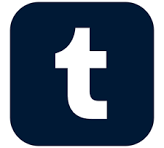Trump’s latest tariffs, which build a series of similar steps taken from return to office 20. January, will hit the countries with whom Washington has a great trade deficit or imposed heavy tariffs on American goods. In 2023, American imports were worth $ 1.1 trillion more than exports; No other state is so large trading deficit as USA.
Trump reciprocal tariffs also target countries like Syriathat faced Israel attacks from the overthrow of President Bashar al-Assad in December 2024. and Myanmar, which accumulates Earthquake harms in the middle of the civil war. They also target the economy already struggling to balance their books, depending on the loans of the International Monetary Fund, such as Sri Lanka and Pakistan.
Here’s how each country will be especially targeted by Trump Tariffs and several sectors who are – for now – exempt from the penalty.
What did Trump say?
Trump announced reciprocal tariffs in the executive in addition to the address in the rose garden in the White House on Wednesday. Trump described 2. April as “Liberation Day”.
In the Executive Order, Trump said while the American Commercial Policy was built on the principle of reciprocity, tax and barriers on American products by trading partners were injured by the United States.
Tariffs, he said, was the answer. These reciprocal tariffs take effect 9. April.
During his address, Trump argued that the United States charges their trade partners with smaller tariffs compared to tariffs and non-tariff barriers that partners impose USA.
“For decades, our state is robbed, looted, raped and looted people nearby and far, and friends and enemies,” Trump said.
Holding a chart of new reciprocal tariffs, Trump quoted the example of China, who claimed that they wrote us products on average 67 percent of the tariff. “We will fill in (China) with a discount reciprocal 34 percent tariff,” he said. “We’re shooting, we’re charging them less. How didn’t someone upset? It will be because we never accused anyone.”
But the effective tariff for China will actually be greater – and some countries will now be tariffs from the duties they are being charged on American imports. Chinese goods will face 34 percent of reciprocal tariffs next to Tariff by 20 percent This Trump was previously imposed, leading the total tariff on Chinese goods to 54 percent, near his campaign by 60 percent. China is 2024. year was the second largest trading partner of the USA.
How much is each country of tariff?
The White House has released the annexation of 57 targeted countries, territories and blocks that will face increased tariffs. They include:
- Algeria: 30 percent
- Angola: 32 percent
- Bangladesh: 37 percent
- Bosnia and Herzegovina: 36 percent
- Botswana: 38 percent
- Brunei: 24 percent
- Cambodia: 49 percent
- Cameroon: 12 percent
- Chad: 13 percent
- China: 34 percent (next to 20 percent imposed earlier)
- Democratic Republic of the Congo: 11 percent
- Equatorial Guinea: 13 percent
- European Union: 20 percent
- Falkland Islands: 42 percent
- Fiji: 32 percent
- Guyana: 38 percent
- India: 27 percent
- Indonesia: 32 percent
- Iraq: 39 percent
- Israel: 17 percent
- Ivory Coast: 21 percent
- Japan: 24 percent
- Jordan: 20 percent
- Kazakhstan: 27 percent
- Laos: 48 percent
- Lesotho: 50 percent
- Libya: 31 percent
- Liechtenstein: 37 percent
- Madagascar: 47 percent
- Malawi: 18 percent
- Malaysia: 24 percent
- Mauritius: 40 percent
- Moldova: 31 percent
- Mozambique: 16 percent
- Myanmar: 45 percent
- Namibia: 21 percent
- Nauru: 30 percent
- Nicaragua: 19 percent
- Nigeria: 14 percent
- North Macedonia: 33 percent
- Norway: 16 percent
- Pakistan: 30 percent
- Philippines: 18 percent
- Serbia: 38 percent
- South Africa: 31 percent
- South Korea: 26 percent
- Sri Lanka: 44 percent
- Switzerland: 32 percent
- Syria: 41 percent
- Taiwan: 32 percent
- Thailand: 37 percent
- Tunisia: 28 percent
- Vanuatu: 23 percent
- Venezuela: 15 percent
- Vietnam: 46 percent
- Zambia: 17 percent
- Zimbabwe: 18 percent
Are there other country tariffs?
Yes. In addition to 57 in the list announced on Wednesday, Trump also imposed a flat tariff of 10 percent on products coming from almost all other USA trading partners.
This has done so that it is called for an international action for urgent economic power from 1977. years.
Some leading countries that will face this 10 percent tariff rate on all exports in the United States include:
- United Kingdom
- Australia
- Singapore
- Brazil
- New Zealand
- Turkiye
- United Arab Emirates
- Saudi Arabia
- Chile
These tariffs will take effect 5. April.
What about Canada and Mexico?
While Canada and Mexico were not on the list of countries numb, the latest tariffs, both American neighbors are already facing heavy tariffs.
1. February Trump signed executable orders Imposition 25 percent of tariffs To all goods imported from Mexico and Canada. These tariffs were suspended for a month after negotiations between Trump and the leaders of the two countries.
At the beginning of March Trump, Trump was resurrected by those tariffs, but 6. March, free This includes under the agreement of the United States-Mexico-Canades (USMCA) from these tariffs 6. March.
The non-USMCA-in accordance with the energy and mold faces 10 percent tariffs. All other products that are not in accordance with the Umc from Mexico and Canada continue to face 25 percent of tariffs.
The White House on Wednesday confirmed that the tariffs remain in Mexico and Canada in place.
Which products are released?
Exempt products include copper, pharmaceutical, semiconductors, wood products, energy products and certain critical minerals that are not available in the United States.
26. Marta Trump signed an executive order that imposes 25 percent tariffs on auto imports and certain parts of the car. No additional tariffs on these products were published on Wednesday.
https://www.aljazeera.com/wp-content/uploads/2025/04/AFP__20250402__38VV29M__v1__HighRes__TrumpDeliversRemarksOnReciprocalTariffs-1743666014.jpg?resize=1920%2C1440
2025-04-03 10:34:00

























